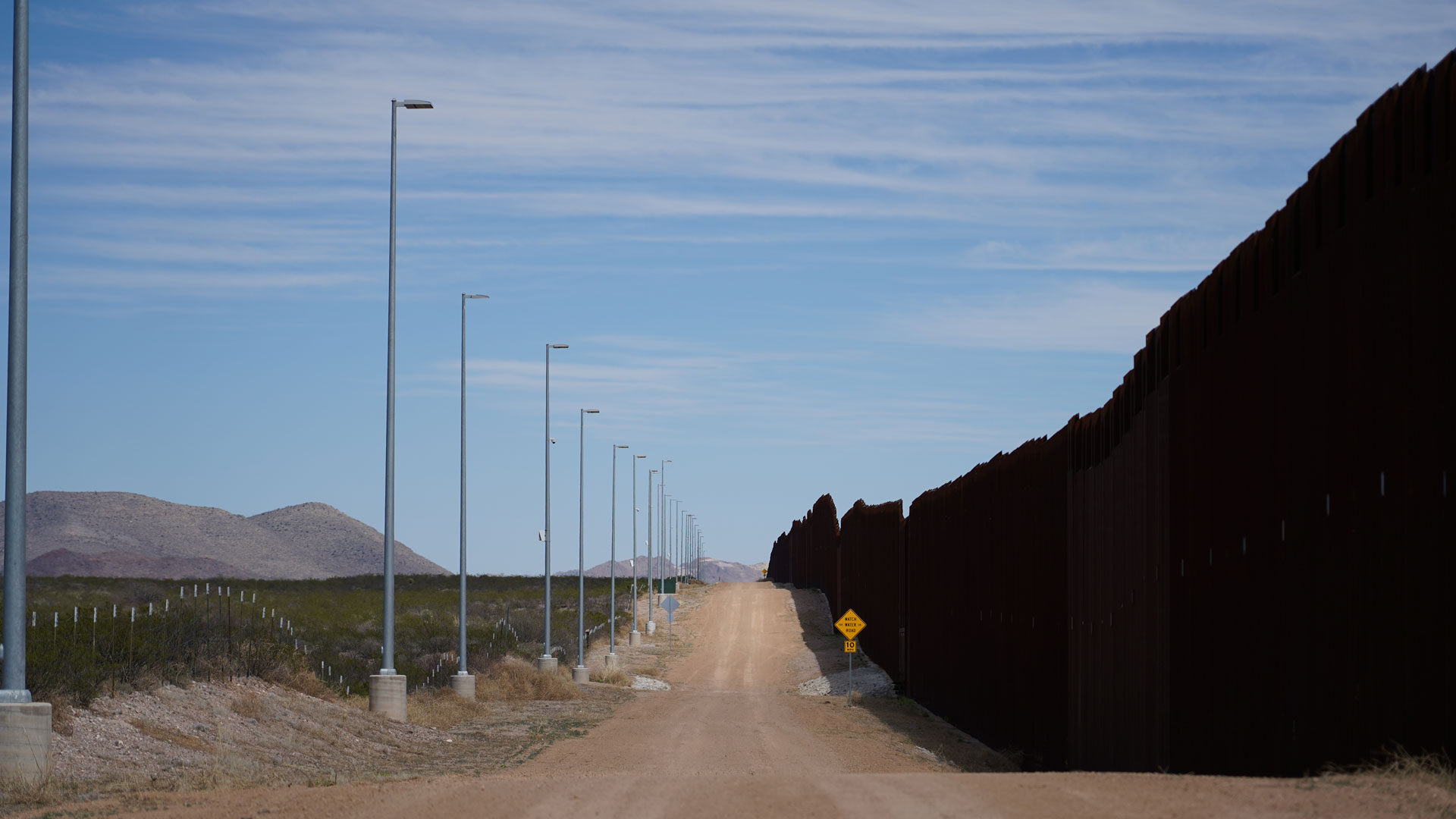 Federal officials have installed 500 border lights in the San Bernardino Valley and Wildlife Refuge, according to the Center for Biological Diversity study, though the lights are not currently operational.
Federal officials have installed 500 border lights in the San Bernardino Valley and Wildlife Refuge, according to the Center for Biological Diversity study, though the lights are not currently operational.
A new report from the Center for Biological Diversity counted about 1,800 stadium lights across 60 miles of protected lands on the U.S.-Mexico border in Arizona, which if turned on, could affect animal migration routes and dozens of threatened and endangered species.
Russ McSpadden, who helped conduct the Center’s study, says artificial light at night affects animals’ ability to forage, mate, hunt, evade predators, and maintain sleep cycles and migration patterns.
While surveying the lights, McSpadden camped at Organ Pipe Cactus National Monument and saw a stunning display of the Milky Way. He says if the border lights were turned on, those stars would be blotted out.
“For humans that might not seem like that big of a deal. We’ve gotten used to not seeing stars, but for migrating birds that move through that area, which are critical to the health of Organ Pipe National Monument, they don’t have Google Maps. They navigate often by stars and other means,” he said.
McSpadden, along with the Center’s Curt Bradley, surveyed areas they call “some of the most biodiverse conservation lands in the country,” including Organ Pipe Cactus National Monument, the San Pedro Riparian National Conservation Area, and the San Bernardino and and the Cabeza Prieta national wildlife refuges.
Sixteen threatened and endangered species live in areas that would be affected by the lighting, including critical habitats for the yellow-billed cuckoo, Quitobaquito pupfish, Sonoyta mud turtle, beautiful shiner, Yaqui catfish, Yaqui chub and San Bernardino spring snail.
The lights aren’t operational yet, but federal officials said last year that Customs and Border Protection would be completing the installation of border barrier systems, including the lighting.
The Center is urging federal officials to remove the lights or do a thorough environmental review of potential harms to the ecosystem, which was waived, along with dozens of environmental laws, when the lights were installed under the Trump administration.
“On the border, in particular in places like Organ Pipe and the San Bernardino National Wildlife refuge, these are places that were established to protect wildlife, and right now they’ve got lighting infrastructure right over springs and directly in Sonoran pronghorn habitat and jaguar habitat,” McSpadden said. “We have a lot of concerns.”

By submitting your comments, you hereby give AZPM the right to post your comments and potentially use them in any other form of media operated by this institution.